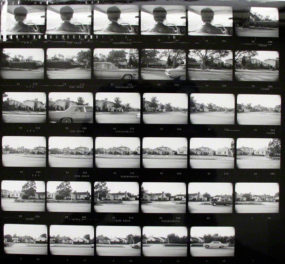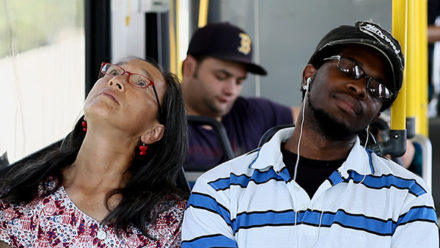As the story goes, 237 summers ago a group of Americans ratified one of the most famous texts in the English language and declared that there should be such a thing as the United States of America. Now we annually celebrate with fireworks, backyard cookouts, parades, and flags. It’s a holiday with many faces—a deeply meaningful celebration of patriotism, the unofficial start of summer, and an occasion of traditions rooted in family and community. I dare say that most Americans have vivid childhood memories of the Fourth of July: things like fantastic displays over the ocean; families sitting on blankets, picnicking and waiting for the fireworks; or kids relentlessly setting off firecrackers in the city streets. I can close my eyes and picture my little sister and myself, sunburned and sugared-up, running around a suburban cul de sac with the other neighborhood kids waving sparklers at each other until the dads were ready to risk their fingers with bottle rockets they had smuggled in from out of town.
Memories like these are part of America’s visual culture. When I reflect on them, I also think of works of art that seem to me to be especially American, images that evoke our landscape, our culture, our politics. And in light of the especially exciting few weeks our country has seen—with intense, national public debates dominating the news cycle and capturing the public imagination—I’m especially interested in the way Americans can and do craft a sense of national identity.
I could list dozens of paintings, sculptures, and photographs that fit the bill, but I won’t. Here are seven of them, in no particular order.
1. Yosemite Valley from Inspiration Point (1865–66) by Carleton E. Watkins

Yosemite Valley from Inspiration Point, negative 1865-66, Carleton E. Watkins. Albumen print. The J. Paul Getty Museum
Thanks to Ken Burns and PBS, the value of creating a system to preserve and protect our exceptional landscapes has been profusely celebrated. Places like Yosemite are national treasures. What could be more optimistic than deciding to care and keep them in the public trust for generations to come? It must have been immensely challenging for Carleton Watkins to navigate this rough terrain with his 19th-century equipment, literally going to great heights for the perfect shot. I imagine him as an early American explorer, charting new vistas with a keen eye. Watkins’ work helped to fuel interest in Yosemite Valley, and in 1864 Abraham Lincoln signed a bill declaring the area inviolable, planting the seeds of our National Parks system.
2. Pearblossom Hwy., 11–18th April 1986 (1986) by David Hockney

Pearblossom Hwy., 11–18th April 1986, 1986, David Hockney. © 1986 David Hockney
“What is that feeling when you’re driving away from people and they recede on the plain till you see their specks dispersing?—it’s the too-huge world vaulting us, and it’s good-bye. But we lean forward to the next crazy venture beneath the skies.” —Jack Kerouac, On the Road
Speaking of exploring, isn’t the open road the ultimate metaphor for personal journeys and possibility? Sure, this road is littered with trash, the desert is unforgiving, and the picture isn’t exactly clear, but that’s character and charm of the American West. Here Hockney depicts a crossroads that plays with perspective and leaves the viewer with the impression that she could go anywhere. And that she is in control of what she wants to look at along the way.
3. Injustice Case (1970) by David Hammons
One of David Hammons’ most famous works depicts the binding and gagging of Bobby Seale in court during his trial in the wake of the 1968 Democratic National Convention. Formally, it is an exceptionally innovative work of art—Hammons used his own body to imprint the paper with grease. It also stands as testimony of the strife and tension of the era. America today is shaped by struggle and activism of the past. It may be hard to imagine a similar scenario playing out in an American courtroom today, but 40 years later, American courts are still addressing race and social justice. Here, poetically, is the backstory of this national debate.
4. The Dinner Party (1974–79) by Judy Chicago

Judy Chicago (American, b. 1939). The Dinner Party, 1974–79. Ceramic, porcelain, textile, 576 x 576 in. (1463 x 1463 cm). Brooklyn Museum, Gift of the Elizabeth A. Sackler Foundation, 2002.10. Artwork © Judy Chicago. Photo © Aislinn Weidele for Polshek Partnership Architects
Now on permanent display at the Elizabeth A. Sackler Center for Feminist Art at the Brooklyn Museum, The Dinner Party is an iconic, monumental work of feminist art. It represents 1,038 women, 39 of them by place settings featuring embroidered runners set with hand-painted china plates. The Dinner Party, created in five years with hundreds of volunteers, was a remarkable accomplishment. For me this work is a visualization of my understanding of the feminists that came before me and represents the collaboration, creativity, and assertiveness of the ’70s feminist movement in America. At a time when feminist issues are still the subject of national debate, I view this work as a landmark on the long road we are still walking.
5. The Great Wall (begun in 1974) by Judith F. Baca
Speaking of landmarks and of collaboration, in my own hometown Judith Baca’s The Great Wall is a half-mile mural in the Tujunga Flood Control Channel that depicts the history of California. An ongoing, collaborative project that is periodically updated by artists, “mural makers,” historians, and ethnologists working under Baca’s direction, the Longest Mural in the World is a standout in L.A.’s prolific, world-renowned mural movement. Inclusive, thorough, and graphically striking, the mural was started when a bike path and green spaces were also added to the area. Recently, plans for interpretive stations and a “green” viewing bridge were developed, making the mural the center of re-defined community space.
6. Mural (1943) by Jackson Pollock

Mural, 1943, Jackson Pollock (American, 1912–1956). Oil on canvas, 8’ ¼” x 19’ 10”. University of Iowa Museum of Art, Gift of Peggy Guggenheim, 1959.6 Reproduced with permission from The University of Iowa
Mural is one of the earliest works of Abstract Expressionism, which is often referred to as the first uniquely American artistic movement. In the ’40s, American artists based in New York would become national and international stars as New York emerged as the new center of the art world, largely on the popularity and adventurousness of abstract painters. Mural is said to have been Pollock’s first commission by legendary art collector Peggy Guggenheim, and has been in the University of Iowa’s collection since it was gifted by Guggenheim in 1951. It is currently at the Getty for conservation and research. The painting will go on view at the Getty Museum in March 2014.
7. Untitled (1988) by Ellsworth Kelly

Untitled, 1988, Ellsworth Kelly. J. Paul Getty Museum.
I chose this work to end the list because its phenomenology demands that you encounter it on individual terms. It is a simple sweep of bronze declaring its presence like an elegant exclamation point. Like much of Ellsworth Kelly’s work, this crisp form is representational of nothing, yet evokes so much—a totem, a kouros, an obelisk. Individual freedom—the right to think, like, and say what you want—is a core principle in American identity, and this work is custom-made for individual interpretation.
What works of art say “America” to you?




Seven great works! This a wonderfully written and thoughtful article. I especially love the Watkins photograph of Yosemite. Knowing that taking it took so much effort, in comparison to the endless throw away digital photographs that are easily taken today, it feels so much more deliberate and concrete. I can’t wait to see it in person again at the Getty. Hockney’s Pearblossom photo collage is iconic and embodies the American open road. What is more American than the open road? I’ve never seen the Toluca Lake bike path mural. I think I’ll head down there this weekend! Thanks, Amy Hood.